A Brief History of the Railfan Hobby in Canada - Part 2 of 5
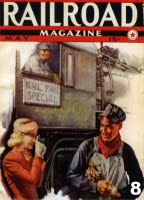
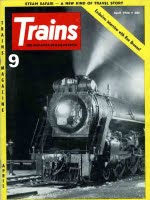
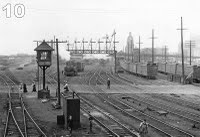 Click on each picture for a closer look!
Click on each picture for a closer look!A Brief History of the Railfan Hobby in Canada - Part 2 of 5 by Derek Boles
It's difficult to determine with any accuracy the number of railway enthusiasts in North America since most railfans don't belong to any organization. Periodical circulations provide some clues as to the extent of the hobby.
Railroad Man's Magazine began in 1906 as general interest periodical for working railroaders with a peak circulation of 167,000. Following a 10-year hiatus in the 1920s, it was reinvented as Railroad Magazine and targeted towards hobbyists as well as rank-and-file railroaders. This pulp magazine retained its working class roots and often featured fiction and photographs of pretty girls flirting with railroaders on the front cover. In 1979, it was merged into Railfan & Railroad and dropped the fiction and cheesecake content. It currently has a monthly circulation of around 40,000.
Trains, the leading commercial U.S. railfan periodical today, began publishing in 1940. It was a decidedly slicker publication than Railroad and tended to reflect a more management-oriented perspective on the railroad industry. It currently has a monthly circulation of around 93,000 and the publisher estimates that railfans spend about $135 million a year on the hobby. Many railfans are also model railroaders, a much larger hobby that generates about $500 million of commercial activity annually.
There are also numerous specialized railfan groups that focus on narrow areas of interest such as the collecting of timetables or railroad china as well as organizations devoted to a single rail company. Canadian National, Canadian Pacific, the Toronto Hamilton & Buffalo and the Ontario Northland, to use local examples, all have their own active organizations and publications.
There is little record of 19th century railfan organizations although undoubtedly such clubs did exist. It is believed that the oldest such organization in the English-speaking world is the Stephenson Locomotive Society, named after the 19th century father and son locomotive pioneers. The society was formed in Great Britain in 1909 and is still active. An even older organization, the Railway Club in Great Britain, began in 1899 and just wound up its affairs in December 2008.
.
Part 2 Images
#8 - One of the earliest general interest magazines for railfans was the U.S. publication Railroad. This 1940s cover shows the elements that helped make the periodical a success: a locomotive hauling a railfan special, an engineer, an attractive young lady and a leering young fireman who appears to have more on his mind than the location of the next water tank.
#9 - Trains began publishing in 1940. Canadian content in the magazine was usually sparse and railfans north of the border had to wait until 1954 before Trains published a front cover with a Canadian subject, the CNR Maritime Express at Riviere du Loup, Quebec.
#10 - This 1914 photograph shows the Bay Street crossing in Toronto looking west towards Union Station. It contains several interesting details, including a rare CPR 0-6-4 tank locomotive performing switching duties between the station and John Street. It also contains a previously unremarked upon detail, a young man in the lower left.
#11 - Could this be the earliest photograph of a Toronto railfan? The young man is obviously interested in something going on along the tracks behind the photographer.
#12 - This 1915 photograph shows two railfans violating just about every safety regulation considered necessary today. They were photographing the Lackawanna Limited near Binghampton, New York. The gentleman on the right fell off the fence before the train passed.
Posting by Derek Boles, TRHA Historian
Click here to read Part 3.
Click here to go back to Part 1.
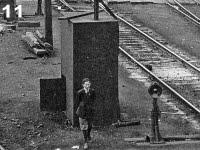
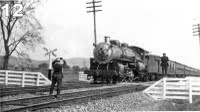






<< Home